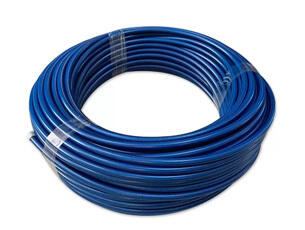
কোম্পানির আঁটকা স্টেনলেস স্টিল ব্রেক লাইন কিটসমূহ এক-of-এক গাড়ির কনফিগারেশন এবং বিশেষ অ্যাপ্লিকেশনের জন্য তৈরি সমাধান প্রদান করে। দক্ষতার সাথে ডিজাইন করা হয়েছে, এই কিটগুলি বিশেষ গ্রাহকের প্রয়োজনের মতো ডিজাইন করা হয়েছে, যাতে আঁটকা দৈর্ঘ্য, ফিটিং এবং রুটিং প্রয়োজন অন্তর্ভুক্ত রয়েছে। এই কিটগুলি টেফ্লন ইনার কোর সহ স্টেনলেস স্টিল ব্রেডেড হস ফিচার করে, যা চাপের তলে ন্যূনতম বিস্তৃতি নিশ্চিত করে এবং সর্বোত্তম ব্রেক প্রতিক্রিয়া প্রদান করে। গ্রাহকরা ৩০৪ বা ৩১৬ স্টেনলেস স্টিল সহ বিভিন্ন উপাদানের মধ্য থেকে নির্বাচন করতে পারেন এবং AN, JIC, বা OEM-style ফিটিং টাইপ নির্বাচন করতে পারেন যা তাদের গাড়ির ব্রেক সিস্টেমের সাথে মেলে। আঁটকা কিটগুলি classic car রেস্টোরেশন, custom builds, বা non-standard ব্রেক সেটআপ সহ পরিবর্তিত গাড়ির জন্য আদর্শ। প্রতিটি কিট CNC bending এবং flaring পদ্ধতি ব্যবহার করে তৈরি করা হয় যা ঠিক মাত্রা নিশ্চিত করে, এবং সমস্ত উপাদান রিলিয়াবিলিটি নিশ্চিত করতে ব্যাপক রূপে লিক টেস্টিং করা হয়। আঁটকা স্টেনলেস স্টিল ব্রেক লাইন কিট ব্যবহারকারীদের একটি পূর্ণ ফিট, উন্নত পারফরম্যান্স এবং তাদের ব্রেক সিস্টেম বিশেষ প্রয়োজনের মতো কাস্টমাইজ করার ক্ষমতা প্রদান করে।

কপিরাইট © ২০২৫ হেংশুই ব্রেক হস মেশিনারি কো., লিমিটেড — গোপনীয়তা নীতি